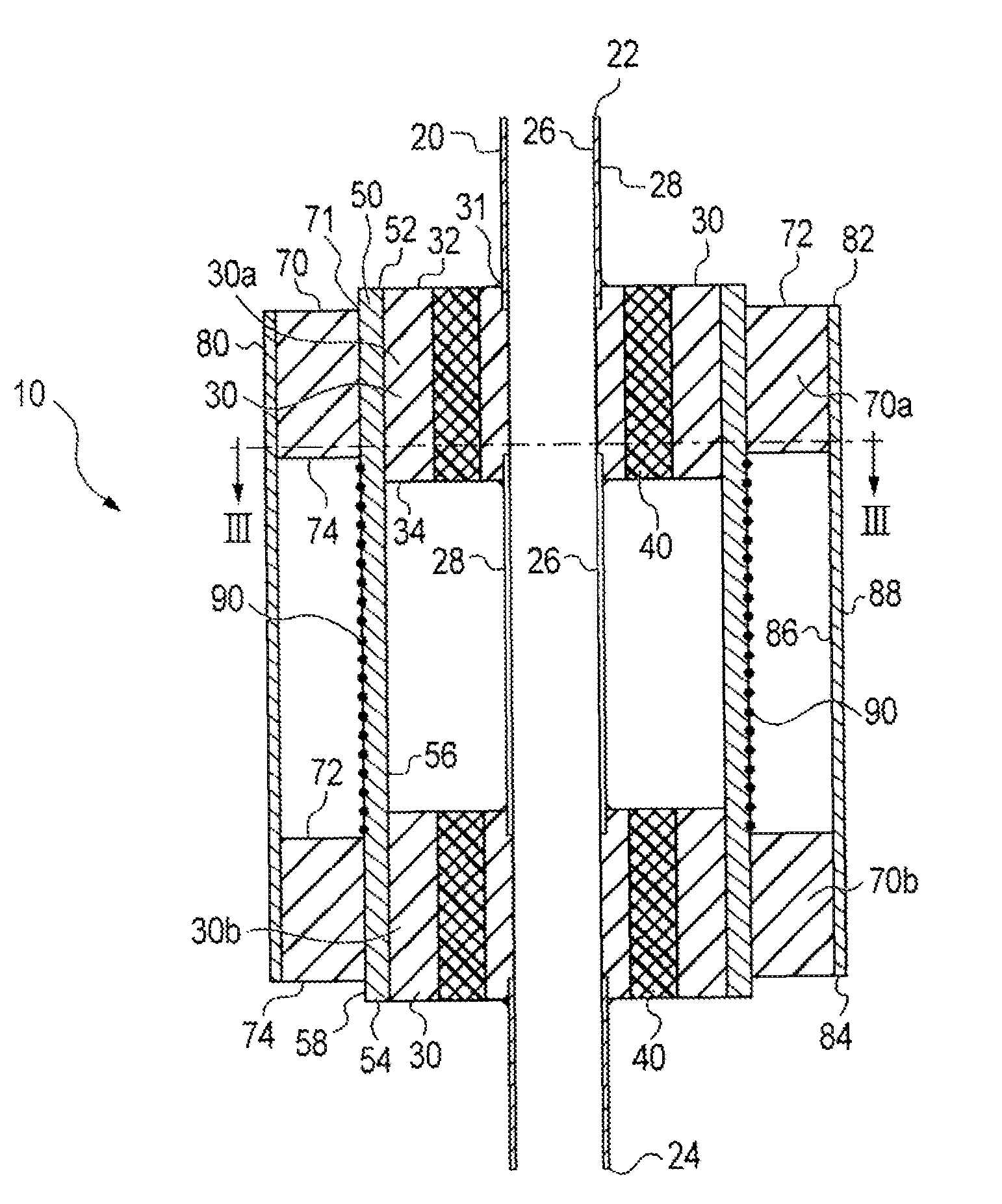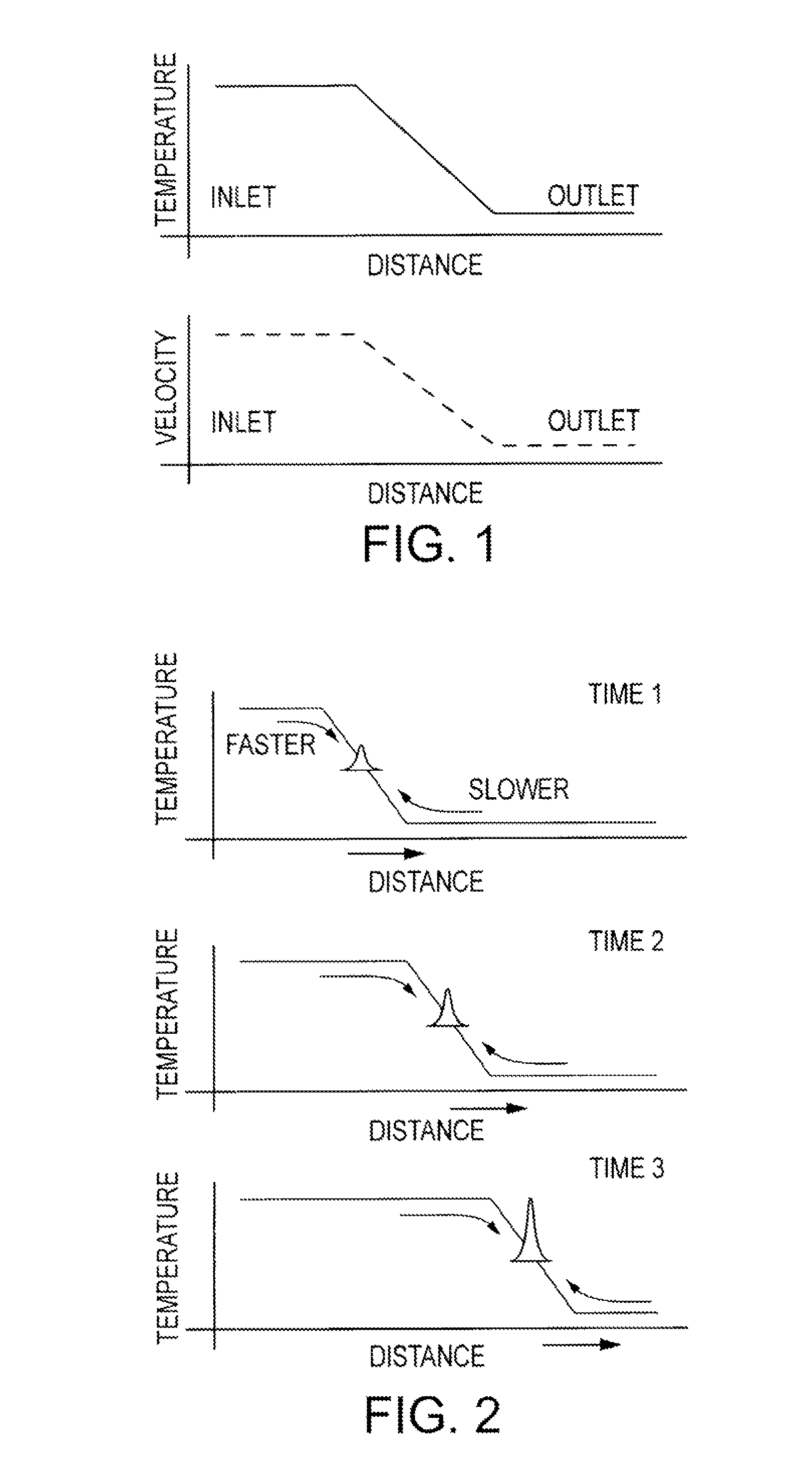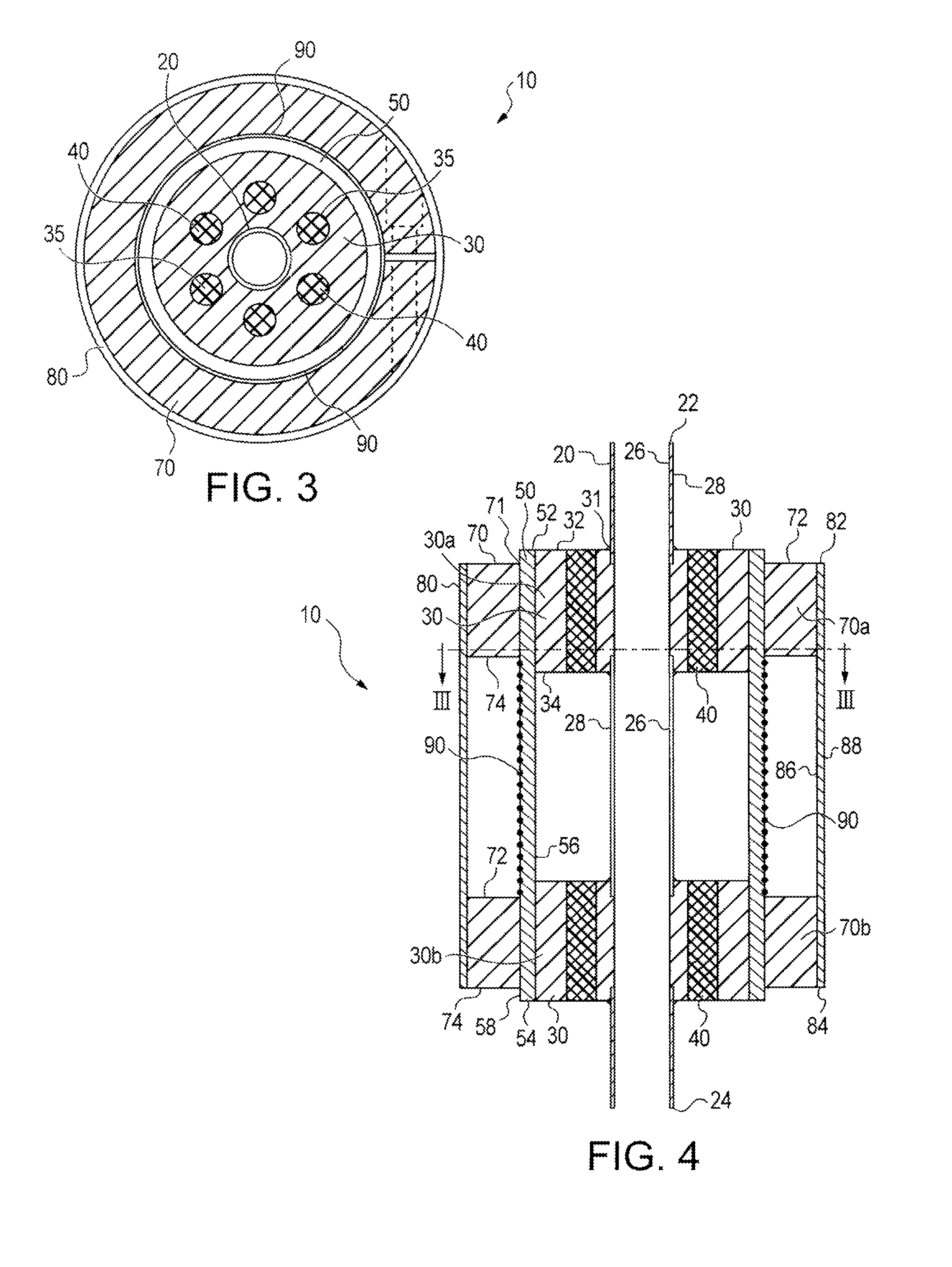Recirculating temperature wave focusing chromatography
a chromatography and recirculating temperature technology, applied in the field of recirculating temperature wave focusing chromatography, can solve the problems of increasing the width and amplitude of individual analyte bands, affecting the detection efficiency of ion exchangers, and difficult to achieve both high resolution and low concentration detection limits in the same analysis, and achieving significant disadvantages and limitations of these methods
- Summary
- Abstract
- Description
- Claims
- Application Information
AI Technical Summary
Benefits of technology
Problems solved by technology
Method used
Image
Examples
Embodiment Construction
[0025]The present invention utilizes temperature gradient focusing (TGF) for a wide array of chromatography applications. The invention is based upon a discovery that by recirculating a moving temperature wave through a system preferably comprising two or more chromatography columns, analytes accumulate at select locations on the temperature wave. Thus, analyte peaks become narrower and more intense as the temperature wave is circulated about the system. The resulting focusing of analyte peaks enables higher resolution and lower detection limits for the system.
[0026]As described herein, the present invention provides a unique strategy for enabling equilibrium gradient focusing in chromatographic operations, and preferably, for gas chromatography and liquid chromatography processes. Before turning attention to the present invention and its various embodiments, it is instructive to first consider chromatography techniques in general.
Chromatography Techniques
[0027]Traditional chromatog...
PUM
| Property | Measurement | Unit |
|---|---|---|
| thickness | aaaaa | aaaaa |
| length | aaaaa | aaaaa |
| length | aaaaa | aaaaa |
Abstract
Description
Claims
Application Information
 Login to View More
Login to View More - R&D
- Intellectual Property
- Life Sciences
- Materials
- Tech Scout
- Unparalleled Data Quality
- Higher Quality Content
- 60% Fewer Hallucinations
Browse by: Latest US Patents, China's latest patents, Technical Efficacy Thesaurus, Application Domain, Technology Topic, Popular Technical Reports.
© 2025 PatSnap. All rights reserved.Legal|Privacy policy|Modern Slavery Act Transparency Statement|Sitemap|About US| Contact US: help@patsnap.com



